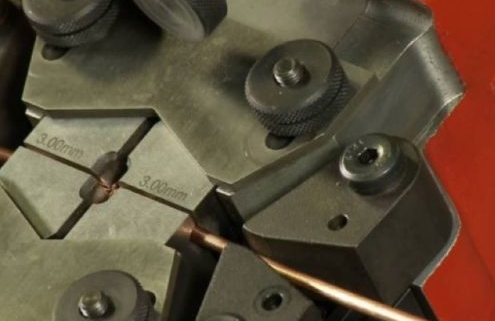Joining Metals Without Heat (Cold Welding)
Techniques like Arc Welding, Friction Welding, Ultrasonic Welding, and Laser Welding, all involve heat in some way or another. In fact, heat is considered synonymous with welding and is integral to join two materials. But this is far from the truth and cold welding is the obvious proof. Cold welding is the process of joining two metals without using heat. It might sound impossible, but it is one of the most popular welding methods out there.
The element of heat in a welding process is used to make the parts plastic enough so that diffusing of the atoms can take place, either between the two work-pieces or with a different medium in the middle. However, it isn’t mandatory to use heat to join materials. Cold state welding demonstrates that in real-time.
Cold welding uses pressure to join two materials. Scientifically, this process is called solid-state diffusion and it uses pressure to create welds. When two materials are pressed together, they generally do not weld to each other. This is mainly due to the fact that there is an oxide layer or a thin barrier on the surface of the materials. If we take the case of a metal, an oxide layer on the surface is like a barrier that doesn’t allow it to diffuse with another metal.
Cold welding overcomes this issue by preparing the metals before they are welded. The preparation process involves cleaning or brushing the metals to such an extent that the top oxide or barrier layer is removed. This is achieved by de-greasing the metal and then wire brushing it. Once the desirable surface cleanliness is obtained, both materials are pressed together mechanically with the right amount of force. The amount of force depends on the material itself, as some materials may only weld at high pressures.
One of the conditions required for cold welding is that at least one of the materials must be ductile and must not have undergone severe hardening. This obviously narrows down the list of materials that can be the candidate for the cold welding. Soft metals are the best choices for cold welding.
The most common joints possible with cold welding are:
- Butt joint
- Lap joint
In Butt joint, removing the barrier layer of the metal is not often required as the plastic deformation that happens during the joining process breaks up the barrier automatically. However, lap joints do require special treatment because otherwise, the material won’t adhere to each other.
The limitations of cold welding
Perfect cold welding is very hard to achieve. This is due to several reasons like oxide layers that form on top of the metal in atmospheric conditions, surface irregularities, surface contamination, and more. Optimum cold welds only happen when the two surfaces that are being pressed together are clean and free from any form of contaminants. The more flat and regular the surface is, the easier and uniform the weld is going to be. Also, there are limitations on the types of metals that cold welding can join. Non-ferrous soft metals are the only candidates suitable for cold welding. Copper and Aluminum are the two most commonly cold-welded metals. Metals that contain carbon are not possible to cold weld.
Advantages of using cold welding
The most noteworthy advantage of cold welding is that the resultant welds have the same bond strength that of the parent material. This feat is very hard to recreate in metalworking. Cold working can also weld Aluminum 2xxx and 7xxx series which is often not possible with other forms of welding.
In industries, cold welding is known for its ability to weld aluminum and copper together which are often hard to weld with other forms of weld techniques. However, the bond created between the two materials by cold welding is very strong. Cold welding provides clean and strong welds without the formation of brittle intermetallic compounds reseña.
Applications of cold welding
Cold welding is mostly applied in welding wires. Since there is no heat involved and the process can be done quickly, cold welding can ensure perfectly welded wires, mainly with aluminum, copper, 70/30 brass, zinc, silver and silver alloys, nickel, and gold. There are even handheld tools available that you can use to cold weld wires, making it very portable and easy to use. Cold welding is also used in cases where dissimilar metals have to be joined, like the one between the copper and aluminum that we already discussed.
Cold welding provides one of the most solid welds for creating parent metal like bonds. It neither requires heat energy nor special tools. Among the most popular weld techniques, cold weld shows that heat isn’t necessary if you are joining specific types of materials.




Leave a Reply
Want to join the discussion?Feel free to contribute!